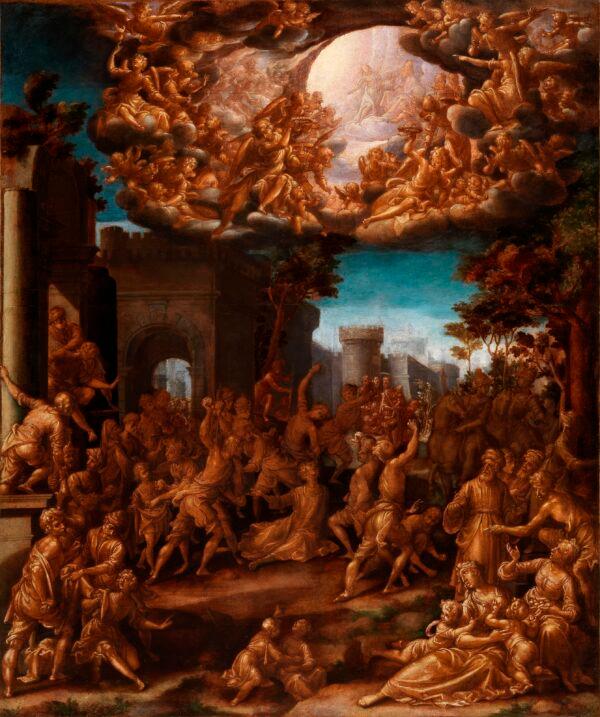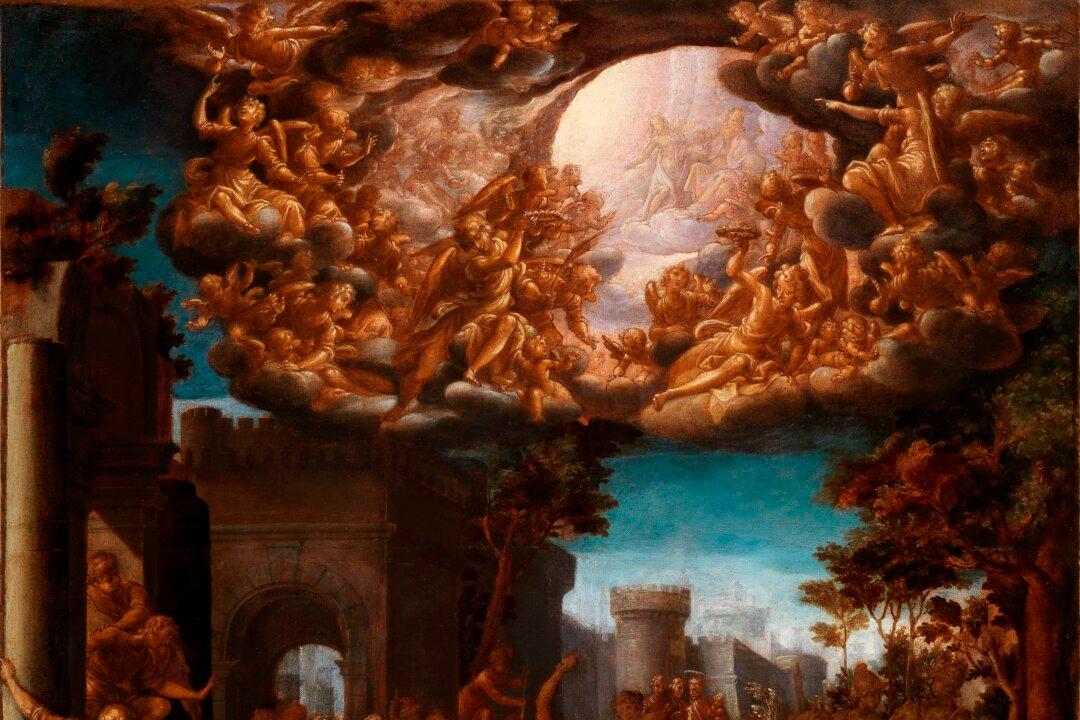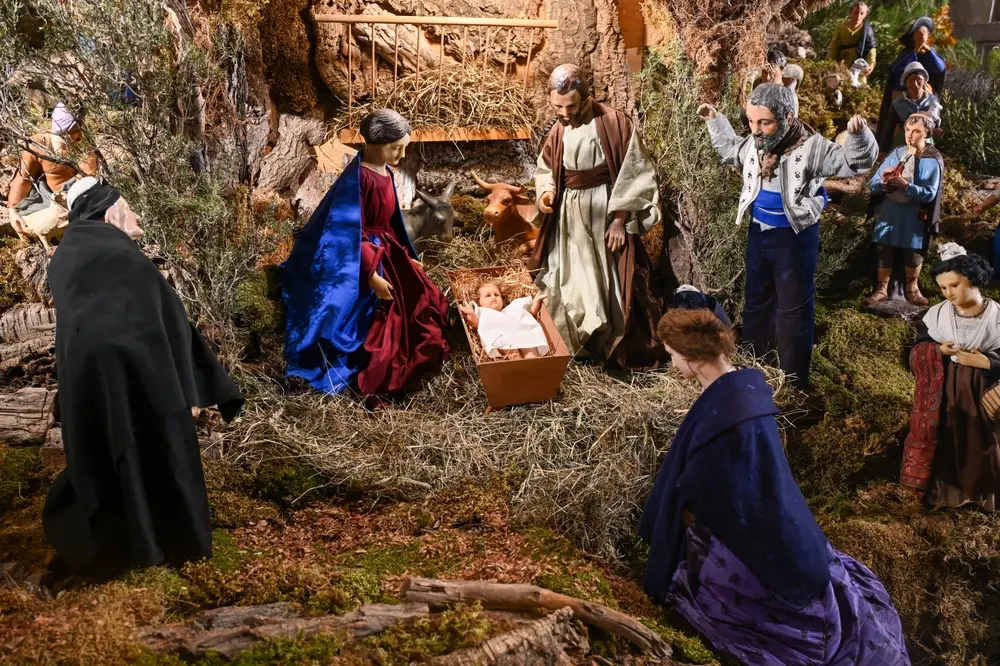In this study of “The Stoning of Saint Stephen,” the late-Renaissance painter Aurelio Lomi captured the moment of Stephen’s martyrdom. Surrounded by an angry mob pelting him with stones, Stephen doesn’t shield himself. Instead, he’s in awe of all that is above him. He looks up to heaven, where he sees Christ standing next to God, who is seated on a throne. And Stephen makes a compassionate appeal to God, asking him for forgiveness—not for himself, but for the people persecuting him.

"The Stoning of Saint Stephen," circa 1602, by Aurelio Lomi. Pen and ink with oil over chalk on four sheets of paper; 37 3/16 inches by 30 11/16 inches. New Century Fund and The Ahmanson Foundation. National Gallery of Art, Washington. National Gallery of Art






